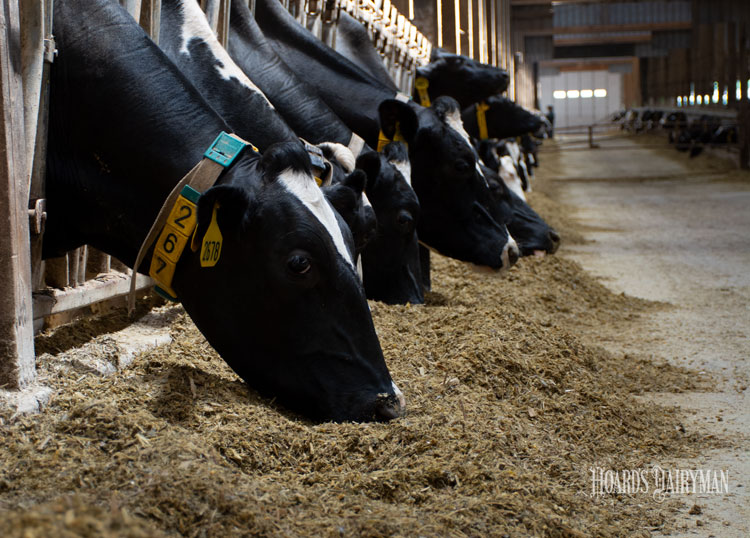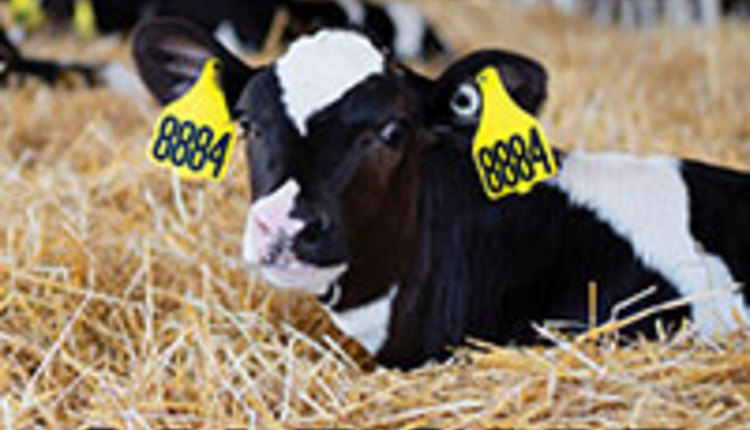
Forage particle length plays a key role in proper rumen function.
When particle size is too small, cows spend less time chewing and producing saliva, which can reduce rumen pH. If feed particles are too long cows are more likely to sort the ration. This raises the likelihood that they will end up eating a different diet than the one formulated by the nutritionist. The Penn State Particle Separator is an on-farm tool that can provide objective measurements of feed particle size and can be used to evaluate rations and feeding management.
Suggested guidelines
To begin with, the separator can be used to evaluate the particle size of forages at harvest to ensure they are cut at the desired length so they will pack and ferment well. Once the individual forages are combined into a total mixed ration (TMR), particle size can be measured in the bunk.
For high-producing cows fed silage-based diets, the goals for TMR particle size are:
- 2 to 8 percent of particles retained on the 19 mm upper sieve
- 30 to 50 percent on the 8 mm sieve
- 10 to 20 percent on the 4 mm sieve
- No more than 30 to 40 percent in the bottom pan
When using a separator with the 4 mm sieve, physically effective fiber can be estimated by adding the amount of feed on the top three sieves (4, 8, and 19 mm) and multiplying by the neutral detergent fiber (NDF) content of the TMR. Sixty to 70 percent of a TMR should be classified as physically effective. Many whole or coarsely processed grains, by-products, and pelleted feeds will be found on the 4 mm sieve. These must be discounted when calculating effective fiber. Only forage and high-fiber by-products should be classified as effective fiber sources.
Be on the lookout for sorting
Beyond these basic evaluations, the particle separator can be used to monitor feed sorting, which may aid in trouble shooting feeding, metabolic, or production problems. To evaluate sorting, measure the particle size of the TMR when first fed and then sample the feed remaining in the bunk several times throughout the day (for example 2, 4, 8, and 24 hours after feeding) or just before the next feeding.
A difference of 10 percent or more on any sieve indicates cows are sorting the feed.
Sorting can cause rumen pH to fluctuate, which can affect intake, rumen fermentation, or overall digestion. Problems may be more pronounced if bunks are overcrowded or if first-calf heifers are grouped with older cows. In these situations, more aggressive cows typically eat grain and other palatable feeds, leaving high fiber or poorly digestible feeds for the subordinate animals.
Watch particle size
Measuring TMR particle size also can be helpful when evaluating a TMR mixer or how the mixer is being used. Over mixing reduces particle size, while under mixing can create a lot of variability in the TMR delivered to different points along the feed bunk. The TMR particle size should reflect the particle size of the individual ingredients in their respective percentages of the diet. The order of adding ingredients to the mixer can also affect particle size.
Testing TMR particle size in several locations along the feeding route can be very useful for evaluating the TMR equipment, operator, and feeding routines. If the ration is being mixed and delivered consistently, the percentage of particles retained on each sieve measured at each location should differ by less than 5 percent.
When used routinely, the particle separator is a powerful tool for evaluating feeding management and identifying opportunities for small changes that can have big impacts on cows’ performance.








